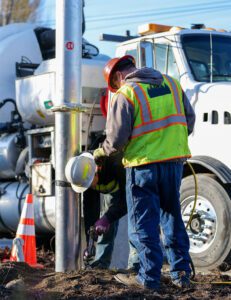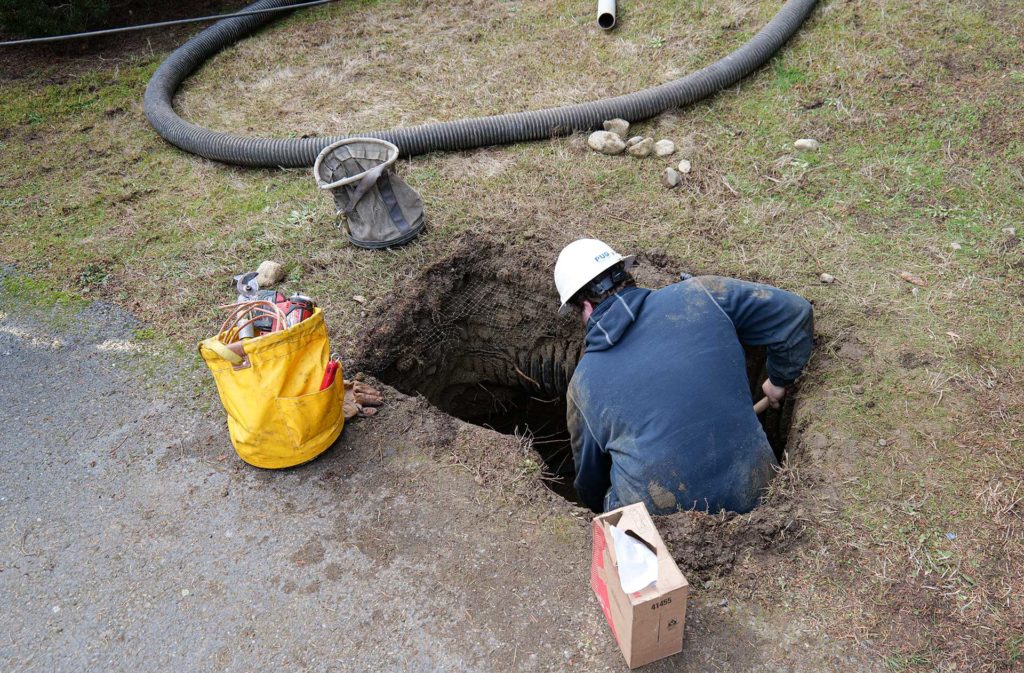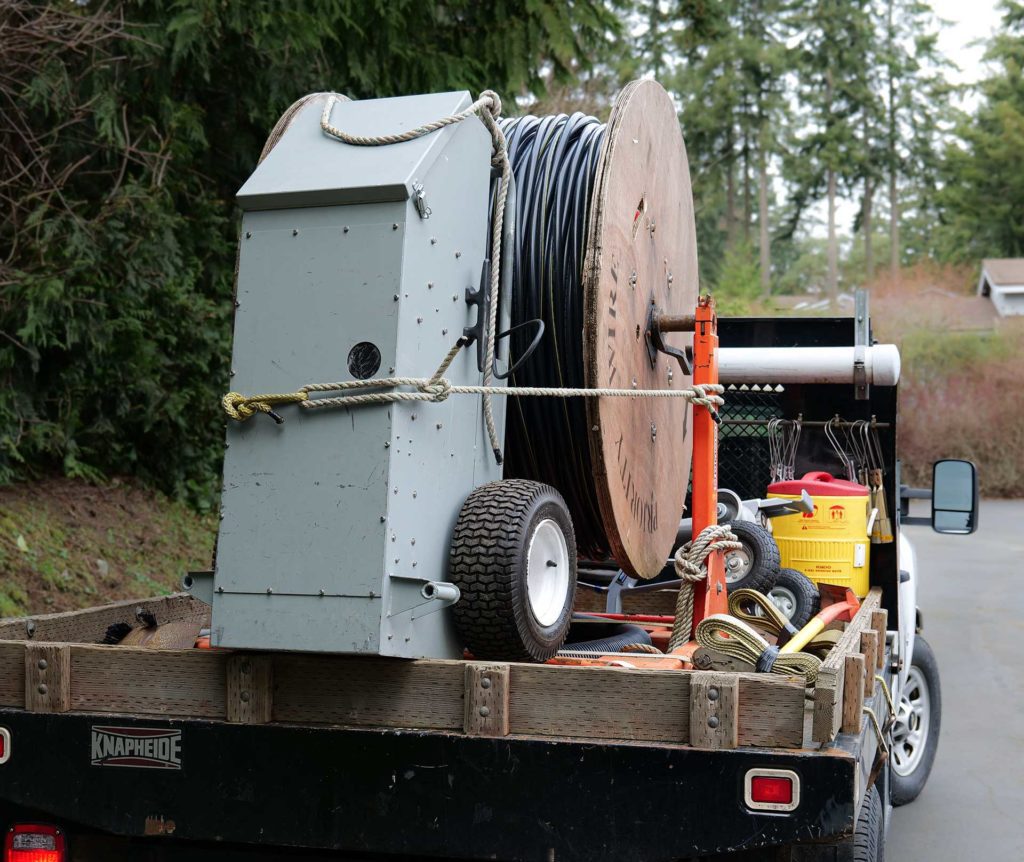Buried: Out of Sight, On our Minds
Mother Nature doesn’t always play nice, whether above ground or below.
As we enter summer conditions and topsoil begins to dry, moisture from spring rains is slowly pulled from the ground. Buried several feet below is a maze of more than 400 miles of distribution power lines county wide, many of which are 30+ years old. 30 years is end-of-life for most buried lines. As the ground shifts, even in tiny ways, any sharp object resting beside the line can contact just enough to break the exterior sheathing, A pinhole-sized nick is all it takes to lose power to a neighborhood.
Today most of the PUD’s underground wire is placed in conduit. Not so in many neighborhoods built in the 1980s or before, like Kala Point or Port Ludlow where trenches were dug, and lines were placed. Conduit helps deflect objects likely to contact lines, such as rocks and even smaller tree and brush roots.

An underground fault occurs when the outer sheath of a line wears through to the copper within that act as the ground. This is known as a “phase-to-ground”, causing the outage which is detected by the PUD’s outage management system.
Line crews can quickly identify the region via outage mapping, but defining an exact location requires a mix of experience and a specialized device called a “thumper”. A thumper connects to the isolated line section, sending a high voltage pulse that, above ground, can be heard by the line crew. The line crew must walk the length of the isolated line to locate the sound immitted when the voltage exits the fault. The thumper allows crews to step-up voltage until the fault is found. Dirt work contractors then begin to dig. Crews carefully navigate underground faults to avoid other utilities in the area by using specialized vacuum digging devices and digging by-hand.
Once the fault is located, line crew replace the segment and carefully backfill around the line. Further work compacting the soil or applying asphalt may be required as well.
Underground lines require significantly more time to repair compared to overhead lines. Often, an underground fault can take 8+ hours to repair including locate time. Construction of a new underground line is typically 3-5x the cost of overhead. Jefferson PUD regularly reviews overhead line sections prone to repeat outages for consideration of undergrounding to aid with service reliability long term.

